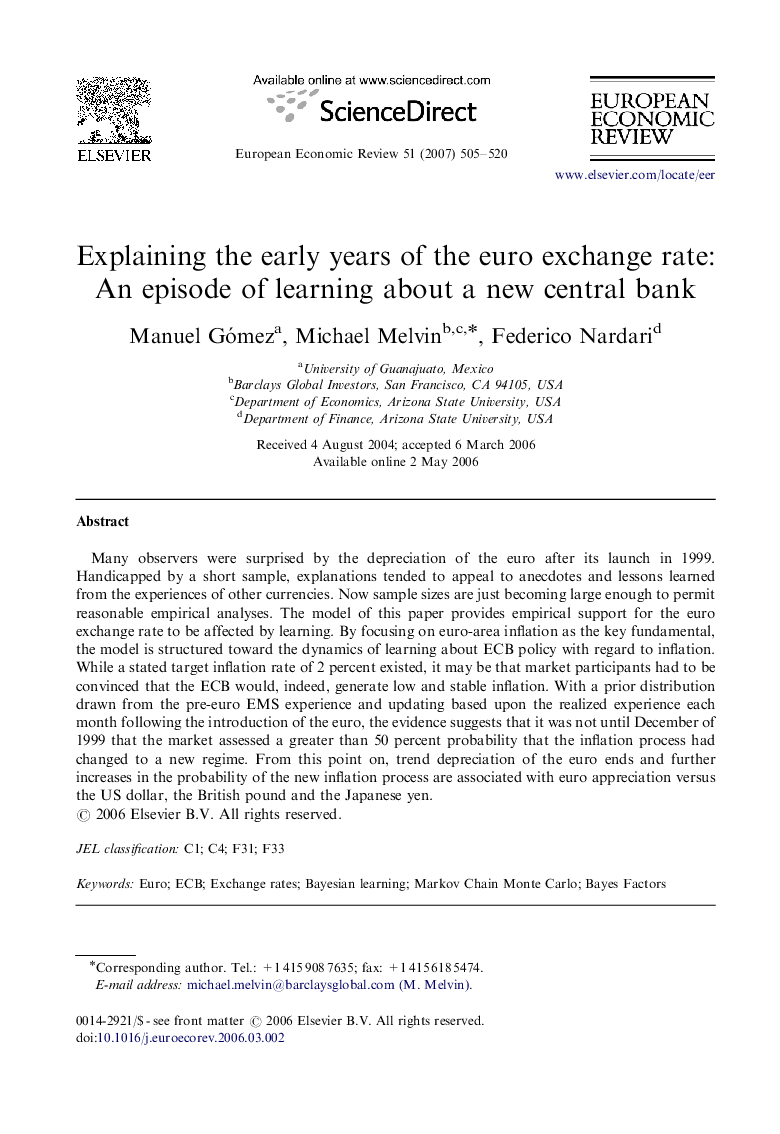| Article ID | Journal | Published Year | Pages | File Type |
|---|---|---|---|---|
| 5067414 | European Economic Review | 2007 | 16 Pages |
Many observers were surprised by the depreciation of the euro after its launch in 1999. Handicapped by a short sample, explanations tended to appeal to anecdotes and lessons learned from the experiences of other currencies. Now sample sizes are just becoming large enough to permit reasonable empirical analyses. The model of this paper provides empirical support for the euro exchange rate to be affected by learning. By focusing on euro-area inflation as the key fundamental, the model is structured toward the dynamics of learning about ECB policy with regard to inflation. While a stated target inflation rate of 2 percent existed, it may be that market participants had to be convinced that the ECB would, indeed, generate low and stable inflation. With a prior distribution drawn from the pre-euro EMS experience and updating based upon the realized experience each month following the introduction of the euro, the evidence suggests that it was not until December of 1999 that the market assessed a greater than 50 percent probability that the inflation process had changed to a new regime. From this point on, trend depreciation of the euro ends and further increases in the probability of the new inflation process are associated with euro appreciation versus the US dollar, the British pound and the Japanese yen.
